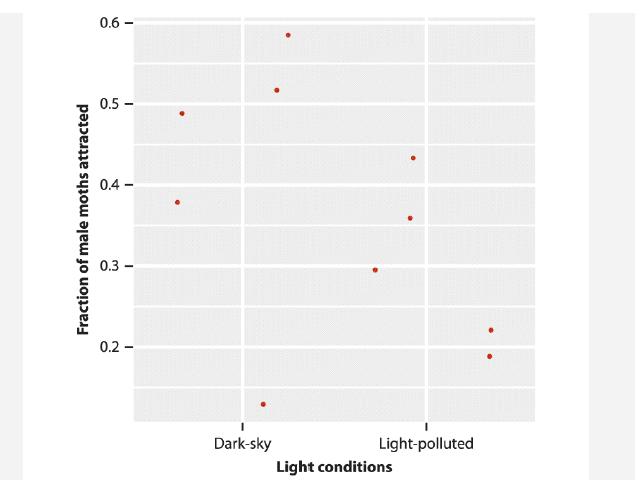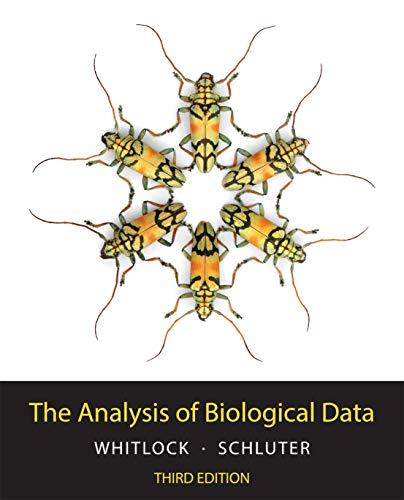Moths are fatally attracted to human light sources, including fire and street lights. If it is a
Question:
Moths are fatally attracted to human light sources, including fire and street lights. If it is a significant source of mortality, we might predict that moth populations living close to human settlements would gradually evolve to reduce their attraction to its light sources. To test this possibility, Altermatt and Ebert (2016) measured light attraction of ermine moths (Yponomeuta cagnagella) from 10 different populations. Five of the populations were located in urban areas with plenty of human lights. The other five populations were located in pristine areas with no light pollution. The data are shown in the graph below. Each dot is the fraction of male moth individuals from a single population that were attracted to light when tested. The plot was computer-generated in R using default settings of the ggplot package.

a. What type of graph is this?
b. What is the explanatory variable and what is the response variable in this graph?
c. What two principles of good graph design are violated in this graph?
d. Computer optional: Download the data from the book website and redraw the graph on the computer, fixing the problems identified in (c).
Step by Step Answer:

The Analysis Of Biological Data
ISBN: 9781319226237
3rd Edition
Authors: Michael C. Whitlock, Dolph Schluter





